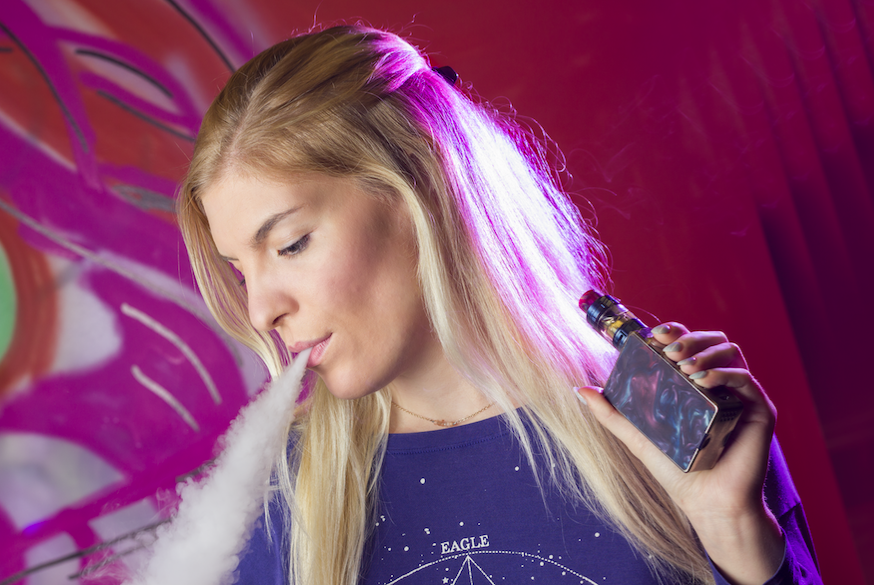You already know cigarettes, asbestos, and arsenic can cause cancer, but what about the carcinogens you don’t know about? The ones you may be exposed to everyday at work, from your take-out food or lifestyle choices that are seemingly benign?
A new report issued by the American Cancer Society (ACS) and other global-leading health groups have outlined 20 “suspected” cancer-causing agents that previous research has raised substantial concerns about, but that remain unresolved. Researchers say a knowledge gap exists, so more research is needed to know if these commonly used occupational agents definitively cause cancer in humans.
So what are these agents and who’s at risk? Here are four of the most common.
1. Styrene
Styrene and its chemical compound cousin, styrene-7,-8-oxide, is ubiquitous in our daily lives as a key component in synthetic rubbers, fiberglass and a wide array of consumer products—from food packaging and plastic, to carpet backing and cigarette smoke.
Does it have a cancer link?
Yes. In 1994 styrene and styrene-7,-8-oxide was classified as “probably carcinogenic” to humans because research showed DNA chromosomal damage and gene mutations in styrene workers. Later two main epidemiological studies revealed a potential link between styrene to human blood cancers and pancreatic cancers. Bladder and kidney cancers have also been linked in some studies. Some evidence exists that styrene exposure can potentially increase prolactin and thereby have a potential relationship to breast cancer.
How do I avoid it?
It won’t be easy. For the general public, residues that leach from food packaging appear to be the single largest source of exposure, followed by indoor air quality. Smokers are most exposed though tobacco smoke.
2. Titanium Dioxide
Although it's one of the least well-studied agents, nearly 5 million metric tons of titanium dioxide are manufactured each year for use in paints and pigment, plastics, paper, cosmetics, catalysts, ceramics, printing inks, roofing granules, glass, and welding fluxes.
Does it have a cancer link?
Unknown. In 2006 the International Agency for Research on Cancer (IARC) classified titanium dioxide as “possibly carcinogenic” to humans based on sufficient evidence from research on laboratory animals. There may be a link between the chemical and lung cancers. Recent research has raised new concern about ultrafine particle dust now used extensively in the cosmetics industry. It has been shown to cause lung inflammation and cell proliferation that could be a precursor to lung cancer.
How do I avoid it?
Titanium dioxide is what makes your toothpaste and skim milk white, and helps your sunblock do its job. It’s also used in tattoo inks and food coloring. Right now, there is little evidence that the mineral in these forms puts you at increased risk for cancer, however you might want to reconsider your mineral makeup.
3. Diesel Exhaust
Some 1.4 million American workers, 3 million European Union workers,
and the rest of us who have the unfortunate fate of parking next to a diesel pickup truck left running at a convenience store, have had firsthand diesel exhaust exposure. This environmental hazard may have become more dangerous in recent years with the introduction and wide use of biodiesel fuels.
Does it have a cancer link?
Yes. Based on more than 30 studies of miners and truck drivers, epidemiologic evidence to date suggests that DE exposure may cause lung cancer, but how much human exposure to the fumes it takes for cancer to occur remains uncertain.
How Do I Avoid it?
If you are a miner, truck or bus driver or in some other occupation field exposed to diesel fumes, you can opt to use soy-based biofuels rather than those derived from rapeseed oil or rapeseed methyl ester, which have been found to be highly mutagenic.
4. Shift Work
The only non-tangible to make the list, shift work affects between 5 and 20 percent of the modern workforce.
Does it Have a Cancer Link?
As wacky as it sounds, shift work has been classified as a probable carcinogenic. Based on the theory that exposure to electric light at night interferes with the biological circadian rhythms might explain, in part, international differences in breast cancer incidence. In the late 1980s it was predicted that women working the night shift would have an elevated cancer risk. In recent years, several studies have found that women working at night for many years are indeed more prone to breast cancer, and that animals who have their light-dark schedules switched grow more cancerous tumors and die quicker.
How do I Avoid it?
If bringing home the proverbial bacon requires you to work graveyard, you might want to make a change. In this context, it’s fair to say the phrase “don’t give up your day job” has a new and healthier twist.
Lynette Summerill is an award-winning writer who lives in Scottsdale, Arizona.In addition to writing about cancer-related issues, she writes a blog, Nonsmoking Nation, which follows global tobacco news and events






Add a Comment1 Comments
Research by national and international agencies has found that exposure to styrene does not increase the risk of human cancer, even in those exposed to styrene at levels thousands of times greater than low levels detected in the environment.
To date, no regulatory health organization has classified styrene as a carcinogen. Moreover, a study conducted by a "blue ribbon" panel of epidemiologists and published in the peer-reviewed Journal of Occupational and Environmental Medicine (November 2009) reports: "The evidence of human carcinogenicity of styrene is inconsistent and weak. On the basis of the available evidence, one cannot conclude that there is a causal relationship between styrene and any type of human cancer."
Priscilla Briones for the Styrene Information and Research Center (SIRC), Arlington, Virginia. SIRC (www.styrene.org) is a trade association representing interests of the North American styrene industry with its mission being the collection, development, analysis and communication of pertinent information on styrene. SIRC has sponsored approximately $20 million dollars in research over nearly 25 years to better understand the potential, if any, effects styrene may have on human health and the environment.
July 20, 2010 - 6:54pmThis Comment